There were three orders of classical columns in the ancient world. The Greeks used the first two -- the Doric Order and the Ionic Order -- the most, and the Romans, who improved upon many Greek architectural elements, used the Corinthian Order quite extensively. These columns were used both in temples and public buildings, and were usually carved from marble.
The Greeks employed a certain concept called entasis when constructing their temples. Entasis is a subtle swelling of the columns, much like the trunk of a tree. Not only does it compensate for the illusion of concavity that results from straight lines, it gives the building life. Though the columns are made from cold stone, this technique turns the temples into organic, living structures. The entasis of Greek columns, especially those of the Doric Order, begins at the base and tapers upward. Roman columns swell one-third of the way up, then return to their original circumference. Entasis is a subtle feature in ancient architecture, but is very visible in temples such as the Parthenon.
The 1800s and early 1900s brought a wave of classicism to America, not just in the Greek Revival style, but in other fashions such as Beaux-Arts and the Classical Revival, as well. With these styles came classical elements -- pediments, friezes, and denturing -- and the three orders of columns. Early on, the styles were left untouched -- they were virtually exact replicas of their Greek and Roman counterparts. As time passed, architects took creative liberties with the orders, often combining them or adding even more ornamentation to the capitals (as seen in my October 5 entry).
Doric Order
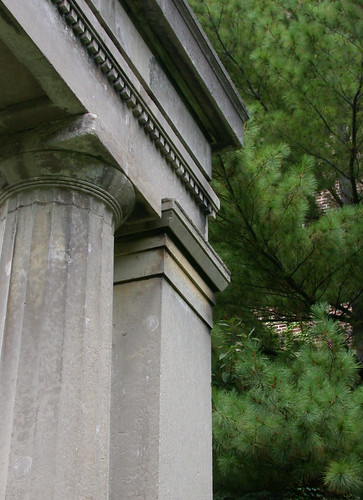
This is part of an ancient Roman structure that has been moved to the University of Michigan campus in Ann Arbor. The Doric Order is characterized by a simple, unadorned capital, heavy, fluted columns, and the lack of a base.

The massive columns standing in front of the University of Michigan's Angell Hall are a rather faithful representation of the Doric Order.
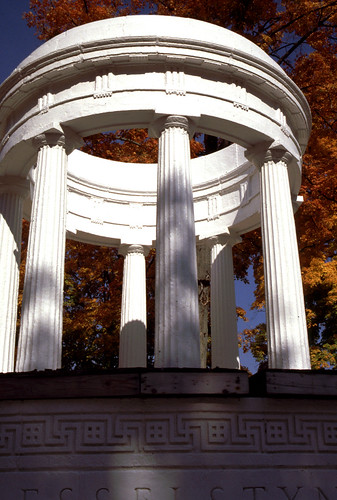
The classical orders are found in fountains such as this in Marshall -- once again, a historically accurate version of the Doric Order, all the way down to the Greek-styled ornamentation.
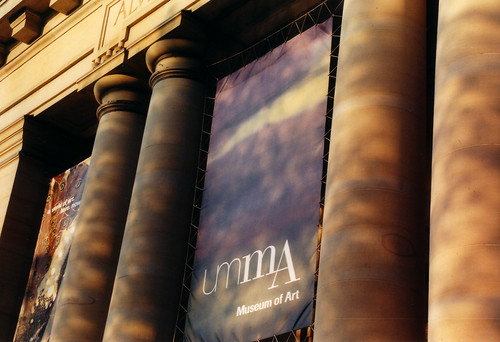
The Doric columns in front of the U of M Alumni Hall (now the U of M Art Museum) are made of sandstone and lack fluting along their shafts.
Ionic Order
The Ionic Order is a graceful column topped by a capital with opposing volutes. In American architecture, architects often added ornamentation to make these columns more interesting.

The Petoskey Public Library Annex, built in 1940, showcases small Ionic columns.

A group of (wooden) Ionic columns on the Harrington Hotel in Port Huron.

The large engaged columns on the soon-to-be demolished Frieze Building in Ann Arbor are constructed in the Ionic order.
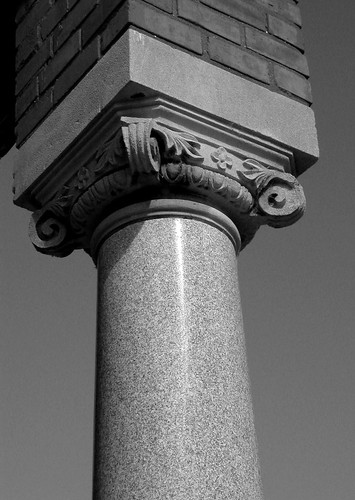
This small corner column on a building in Harbor Springs shows how American architects enhanced the Ionic Order with decorations.
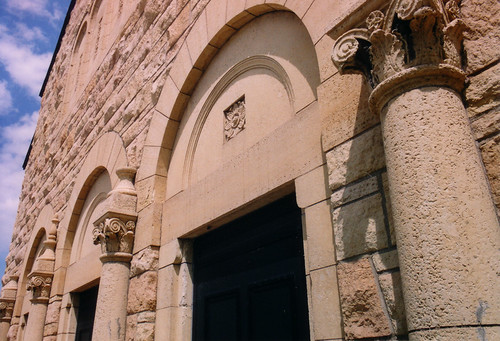
The engaged columns on this church in Escanaba, built in 1938, are a hybrid between the volutes of the Ionic Order and the acanthus leaves of the Corinthian Order.
Corinthian Order
The Corinthian Order has a highly ornate column distinguished by the stylized acanthus leaves that decorate its capital. While the Doric and Ionic orders can be found on small buildings and houses, the Corinthian Order was usually saved for large banks, museums, and public buildings.
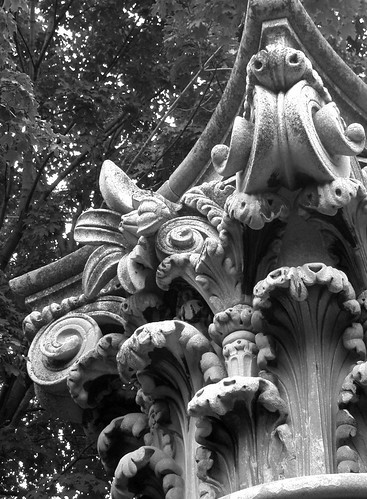
This ancient Roman column, showing the acanthus leaves of the Corinthian Order, is located on the U of M campus.

The Negaunee National Bank building also features Corinthian columns.
2 comments:
Wow -- excellent presentation -- I really learned something!
Post a Comment